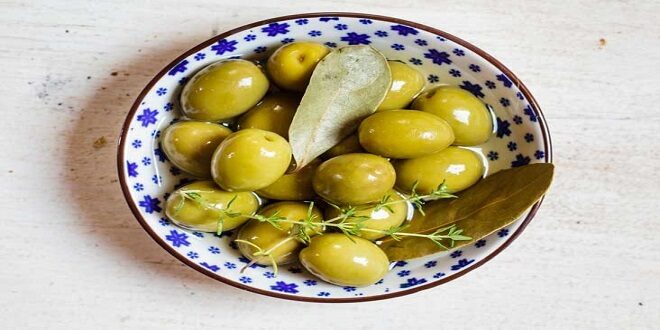Introduction
The olive fruit is a drupe. It has a bitter component (the glucoside oleuropein), a low sugar concentration (2.6%–6.0%), and a high oil content (10%–30%). Such characteristics prevent olives from being directly from the tree and promote diverse processes to make them edible, which can slightly differ between areas of production (Garrido Fernández et al. 1997).
The Trade Standard Applying to Table Olives (International Olive Oil Council [IOOC] 2004) defined this food as “the product obtained from suitable olive cultivars, processed to remove their natural bitterness, and preserved (by natural fermentation, heat treatment, or preservatives) with or without brine until consumption.
With the exception of certain presentations, table olives are fermented products. Thus, information on their physicochemical and microbiological characteristics is essential for understanding and improving their processing, storage, and safety. In the last few decades, various books have been published on the subject (Fernández Díez et al. 1985; Garrido Fernández et al. 1997; Kailis and Harris 2007). The present chapter is an overview based on the most recent contributions to this field.
Trends in Table Olive Production and Consumption
Table olives are a traditional fermented vegetable of Mediterranean countries. The production of this food was a craft process until the middle of the twentieth century, when mass fermentation and storage were introduced together with pitting and pitting/stuffing automation. The progressive mechanization in the industries has led to a rapid expansion of the sector.
Nowadays, table olives are one of the major fermented vegetables, with overall production and consumption of more than 2,100,000 tons.
Most of the table olives are produced in the European Community (EC; Table 16.1) with Spain (553,000 tons), Greece (95,000 tons), and Italy (56,000 tons) as the main contributors. Approximately 25% of the EC table olives are destined for exportation to third countries.
There are also important productions in Egypt (432,000 tons), Turkey (200,000 tons), and Peru, the United States, Syria, Argentina, Algeria, and Morocco (these latter countries with approximately 100,000 tons each).
The EC, Egypt, Argentina, and Morocco are strongly committed to the international market, but only a few producers require importation to cover their internal demand (the United States, 240,000 tons; Italy, 122,000 tons).
Main Cultivars Devoted to Table Olive Production
The wild olive tree (Olea europaea L.) originated in Asia Minor. The Phoenicians started disseminating the olive throughout the Greek isles and Greek mainland. Later, the olive spread throughout the Mediterranean countries reaching Tripoli, Tunis, Sicily, and southern Italy.
The Romans continued the expansion of the olive tree to the countries bordering the Mediterranean Basin. Olive cultivation was introduced in Spain by the Phoenicians (1050 BC). During the fifteenth and sixteenth centuries, the Spanish extended olive planting to the Americas, where there is an increased production nowadays. The olive tree has also recently expanded to the Far East (Japan), South Africa, and Australia (IOOC 1996).
Olive cultivars devoted to the production of table olives (Figure 16.2) must meet several requirements (IOOC 2004). The varieties that can only be used are those whose volume, shape, flesh-to-stone ratio, fine flesh, taste, firmness, and ease of detachment from the stone make them particularly suitable for processing.
In Spain, the most well-known olive cultivar is Manzanilla, which has a moderate size (200–300 fruits per kilogram). It is an apple-shaped fruit with a fine skin, an excellent taste, and a flesh-to-pit ratio of 6:1. The Cacereña variety is very similar to Manzanilla, but with a slightly lower size. However, it is prone to softening and gaseous spoilage.
Gordal is also very popular in Spain because of its big size (100–120 fruits per kilogram) and its flesh-to-pit ratio (8:1). It has a fine epicarp with typical white spots and a mesocarp with a good texture. Its stone is right and regular, making this cultivar also adequate for mechanization.
Hojiblanca is an olive cultivar with a double use (oil extraction or table olives). Its flesh-to-pit ratio is 6:1 and its size, very variable, is approximately 230 fruits per kilogram. Other Spanish cultivars are Aloreña, Verdial, Picual, Lechin, Arberquina, and Morona.
Last word
Manzanilla and Gordal are usually devoted to the production of green Spanish-style table olives, although Gordal is also prepared as natural seasoned turning color olives.
Hojiblanca may be used as both green and ripe olives. On the contrary, Aloreña is exclusively used as seasoned olives and possesses the only Spanish table olive Protected Denomination of Origin.
 TRUTHREVIEWERS
TRUTHREVIEWERS




